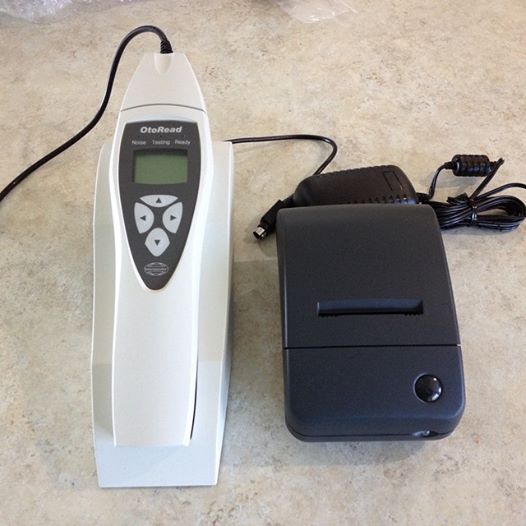Hearing loss in children can be scary. Sometimes just getting answers about hearing in young children can be difficult. What happens if a child fails the newborn hearing screening? What does it all mean?
I’m happy to announce that our clinic now has enhanced capacity to help find answers. We now have a diagnostic Otoacoustic Emissions Device. This machine allows me to measure tiny sounds that the outer hair cells make in response to sounds that they are amplifying. It is a wonderful tool that can identify problems in the inner ear. Although not a true test of “hearing”, i.e., what the brain truly does, it can alert me to problems at a very early stage.
The test takes only about 30 seconds per ear, but gives me a lot of information about the health of the inner ear. The hardest part is having a child be still a quiet enough to get the testing done!
Otoacoustic Emissions (OAEs) were first discovered by Dr. David Kemp in the 1970s. It took until the 1990s to develop a diagnostic device that could be used in a clinical setting. The ability to use OAEs opened up universal hearing screening for newborns, and made diagnosing and treating hearing loss possible in infants much younger than had been done previously. There are two types of stimulus used for OAEs, transient noises or distortion products (DP). The DP uses two different tones near a center frequency, and the ear produces a different tone that is a result of the two tones, or a distortion product. This type of testing can give frequency specific information about how the outer hair cells are functioning.
Using DPOAEs in our clinic expands our ability to test children down to 12 months of age, verify hearing loss in hard-to-test patients, and even help in diagnosing and treating tinnitus. I am so glad to be able to offer these new services!
Once hearing loss is diagnosed, treatment is available, and children with hearing loss can develop language and learning skills in a normal fashion. It is so rewarding to help these young people grow and reach their full potential.
Enjoy this video that explains a bit more:
